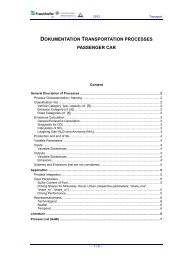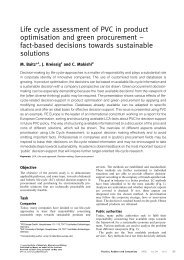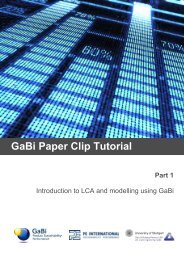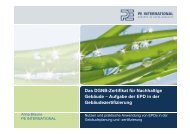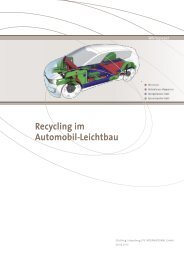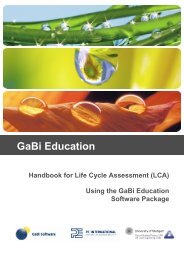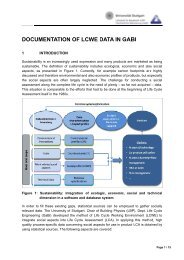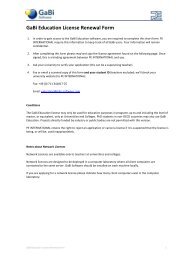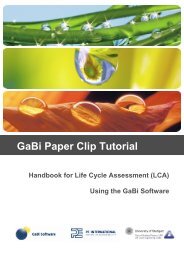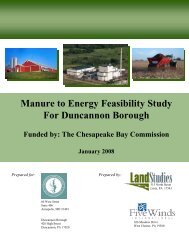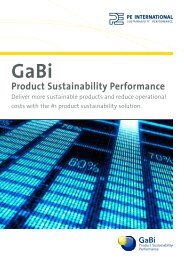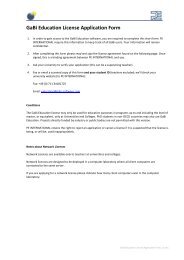GaBi Paper Clip Tutorial - GaBi Software
GaBi Paper Clip Tutorial - GaBi Software
GaBi Paper Clip Tutorial - GaBi Software
Create successful ePaper yourself
Turn your PDF publications into a flip-book with our unique Google optimized e-Paper software.
Conducting Life Cycle Assessments<br />
outputs are first assigned to impact categories and their potential impacts quantified<br />
according to characterization factors. Figure 8 shows the conversion from emissions to<br />
impact potentials via classification and characterization.<br />
Figure 8: Classification and Characterization<br />
The Life Cycle Impact Assessment involves several steps according to the ISO standard.<br />
These can be found in more detail in the ISO 14044 standard.<br />
Within the scope of a study certain elements are defined for the LCIA. Mandatory<br />
elements include the selection of relevant impact categories, classification and<br />
characterization. The optional elements of the study are normalization, grouping and<br />
weighting.<br />
2.3.1 Impact Assessment Methods<br />
There are different methods that can be used to perform a Life Cycle Impact Assessment.<br />
These methods are continuously researched and developed by different scientific groups<br />
based on different methodologies. This handbook does not explain the development of the<br />
different methods, but it does describe them.<br />
In life cycle impact assessment methods, such as TRACI or CML, two main approaches<br />
are used to classify and characterize environmental impacts: the problem-oriented<br />
approach (mid point) and the damage-oriented approach (end point).<br />
20



